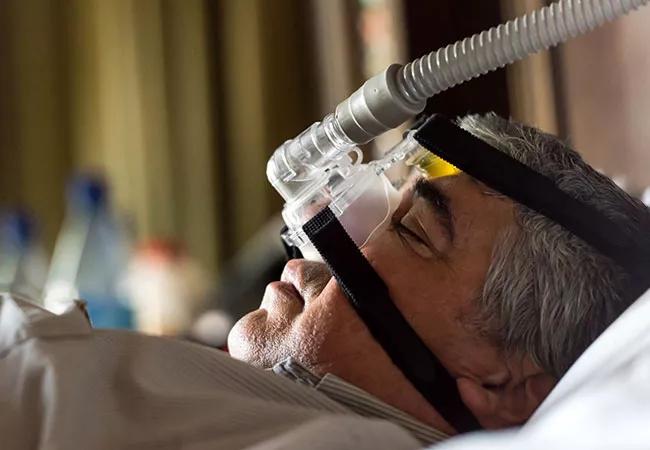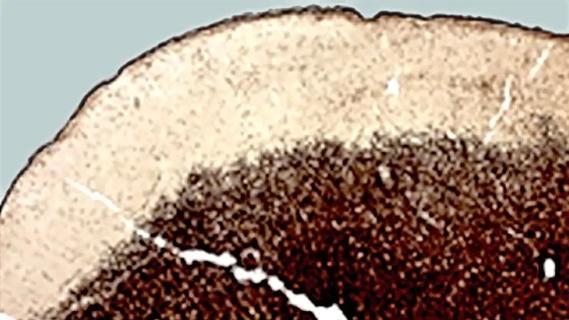More case-finding than screening

By Reena Mehra, MD, MS, and Nancy Foldvary-Schaefer, DO, MS
Advertisement
Cleveland Clinic is a non-profit academic medical center. Advertising on our site helps support our mission. We do not endorse non-Cleveland Clinic products or services. Policy
Recent guidelines from the United States Preventive Services Task Force (USPSTF) say that there is insufficient evidence to recommend screening for obstructive sleep apnea (OSA) in people who have no symptoms of it.
Their conclusion is logical, rigorous, and evidence-based. However, they might be misinterpreted and need to be put into context.
First, note that the USPSTF is referring to people who have no symptoms. The American Academy of Sleep Medicine has issued recommendations about screening and diagnostic testing in people who do have symptoms, in whom it is important to pursue screening and diagnostic testing. Treating OSA improves symptoms, as clinical trials have shown unequivocally and consistently.
Second, the absence of sufficient evidence cited by the USPSTF does not necessarily mean that screening for OSA in asymptomatic people is not beneficial — it has just not been systematically studied. There was insufficient evidence available to make a recommendation to allocate resources to screen all patients irrespective of symptoms.
The Sleep Heart Health Study suggested that few people with OSA were diagnosed with it and that even fewer were treated for it. More recent data indicate that this underdiagnosis persists and is more pervasive in underserved minority groups.
Moreover, screening is not the same as case-finding. The purpose of screening, as defined by Wilson and Jungner in a report for the World Health Organization, is “to discover those among the apparently well who are in fact suffering from disease.”
Advertisement
Case-finding, on the other hand, focuses on those suspected of being at risk of the disease. The overall prevalence of OSA is about 26 percent by one estimate, and many more people have risk factors for it. For example, in one study, 69 percent of patients presenting to a primary care clinic were overweight or obese, and many primary care patients have diseases that OSA can exacerbate. One can therefore argue that in clinical practice, testing for OSA is more like case-finding than screening — most patients that you see have unrecognized symptoms of it or risk factors for it.
Treating OSA lowers blood pressure, which in turn improves cardiovascular outcomes. Effects are most pronounced in those with resistant hypertension. The reduction in blood pressure is only about 2 to 3 mm Hg, but this translates to a 4 to 8 percent reduction in future risk of stroke and coronary heart disease.
The Continuous Positive Airway Pressure (CPAP) Treatment of OSA to Prevent Cardiovascular Disease multicenter randomized clinical trial investigated the impact of treating OSA with CPAP compared with usual care. Although no statistically significant difference was seen in the composite cardiovascular outcome, propensity-score analysis in the subgroup adherent to CPAP demonstrated a lower composite of cerebral events in those who used CPAP for at least four hours a day.
The findings from this trial are difficult to interpret for several reasons. Adherence to CPAP was suboptimal, the severity of OSA might not have been bad enough to permit observation of a significant treatment effect, and the generalizability of the findings is unclear, given that many of the participants were from underresourced regions.
Advertisement
In a meta-analysis of cohort studies comprising more than 3 million participants, Fu et al found that the cardiovascular mortality rate was 63% lower in those with obstructive sleep apnea using CPAP than in untreated patients.
Overall, the USPSTF report is intended to guide healthcare decision makers. However, it includes a caveat to not substitute the findings for clinical judgment and to interpret the findings in the context of collateral pertinent information.
Although no high-quality data exist to support or refute global screening for OSA in the primary care setting, the high prevalence of this disease and its detrimental effects on health and quality of life if left untreated should not be dismissed.
Arguably, most patients who present to primary care clinics are not healthy, are not free of symptoms, and are at risk of OSA because they are obese. Testing for it is therefore more like case-finding than screening.
Future efforts should focus on leveraging the electronic medical record platform to collect sleep-specific measures, implementing case-finding strategies, and performing pragmatic clinical trials in the primary care setting to inform and guide optimal and cost-effective approaches to screening.
Dr. Mehra is Director of Sleep Disorders Research in Cleveland Clinic’s Neurological Institute. Dr. Foldvary-Schaefer directs the Sleep Disorders Center.
This abridged article was originally published in Cleveland Clinic Journal of Medicine.
Advertisement
Advertisement

Testing options and therapies are expanding for this poorly understood sleep disorder

Real-world claims data and tissue culture studies set the stage for randomized clinical testing

Digital subtraction angiography remains central to assessment of ‘benign’ PMSAH

Cleveland Clinic neuromuscular specialist shares insights on AI in his field and beyond

Findings challenge dogma that microglia are exclusively destructive regardless of location in brain

Neurology is especially well positioned for opportunities to enhance clinical care and medical training

New review distills insights from studies over the past decade

Guidance from an expert on distinguishing — and co-managing — the disorders